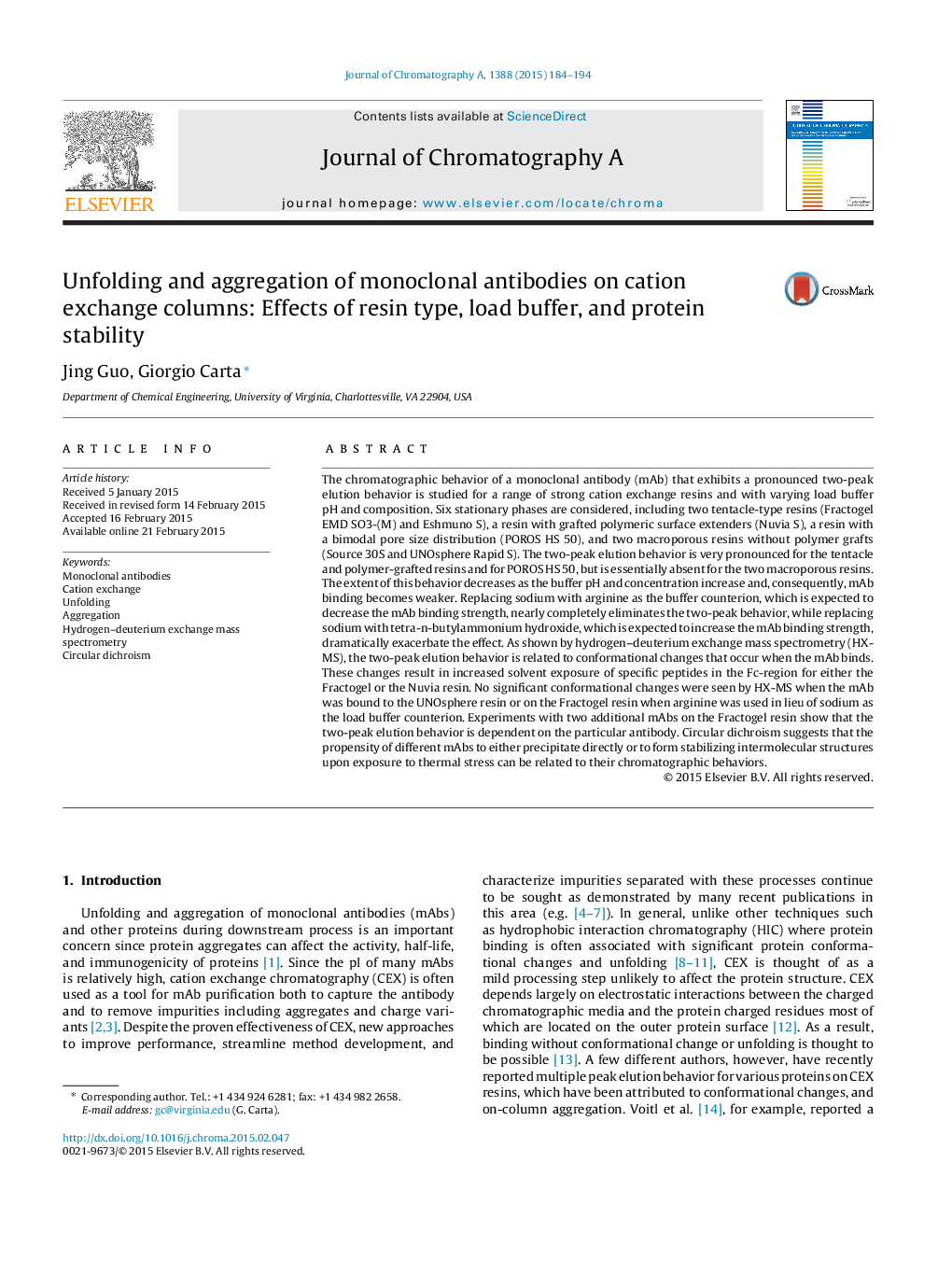| کد مقاله | کد نشریه | سال انتشار | مقاله انگلیسی | نسخه تمام متن |
|---|---|---|---|---|
| 1201905 | 1493538 | 2015 | 11 صفحه PDF | دانلود رایگان |
• mAb two-peak elution behavior occurs on various CEX resins.
• Effect is pronounced for polymer-grafted resins and absent for macroporous resins.
• HX-MS shows that unfolding of the bound mAb is the cause.
• Counterion type and pH have large effects on the two-peak elution behavior.
• Arginine in the load step eliminates unfolding and the two-peak elution behavior.
The chromatographic behavior of a monoclonal antibody (mAb) that exhibits a pronounced two-peak elution behavior is studied for a range of strong cation exchange resins and with varying load buffer pH and composition. Six stationary phases are considered, including two tentacle-type resins (Fractogel EMD SO3-(M) and Eshmuno S), a resin with grafted polymeric surface extenders (Nuvia S), a resin with a bimodal pore size distribution (POROS HS 50), and two macroporous resins without polymer grafts (Source 30S and UNOsphere Rapid S). The two-peak elution behavior is very pronounced for the tentacle and polymer-grafted resins and for POROS HS 50, but is essentially absent for the two macroporous resins. The extent of this behavior decreases as the buffer pH and concentration increase and, consequently, mAb binding becomes weaker. Replacing sodium with arginine as the buffer counterion, which is expected to decrease the mAb binding strength, nearly completely eliminates the two-peak behavior, while replacing sodium with tetra-n-butylammonium hydroxide, which is expected to increase the mAb binding strength, dramatically exacerbate the effect. As shown by hydrogen–deuterium exchange mass spectrometry (HX-MS), the two-peak elution behavior is related to conformational changes that occur when the mAb binds. These changes result in increased solvent exposure of specific peptides in the Fc-region for either the Fractogel or the Nuvia resin. No significant conformational changes were seen by HX-MS when the mAb was bound to the UNOsphere resin or on the Fractogel resin when arginine was used in lieu of sodium as the load buffer counterion. Experiments with two additional mAbs on the Fractogel resin show that the two-peak elution behavior is dependent on the particular antibody. Circular dichroism suggests that the propensity of different mAbs to either precipitate directly or to form stabilizing intermolecular structures upon exposure to thermal stress can be related to their chromatographic behaviors.
Journal: Journal of Chromatography A - Volume 1388, 3 April 2015, Pages 184–194
